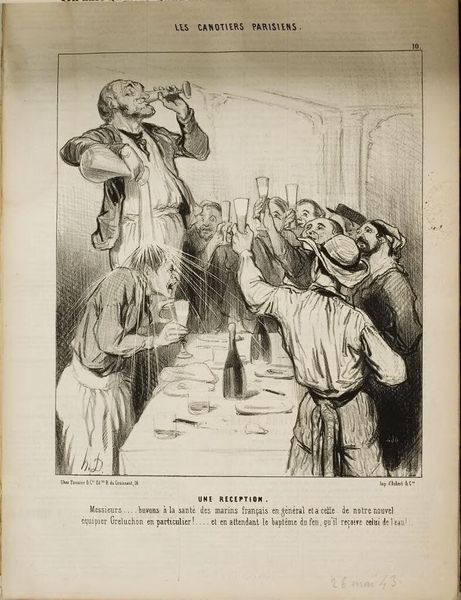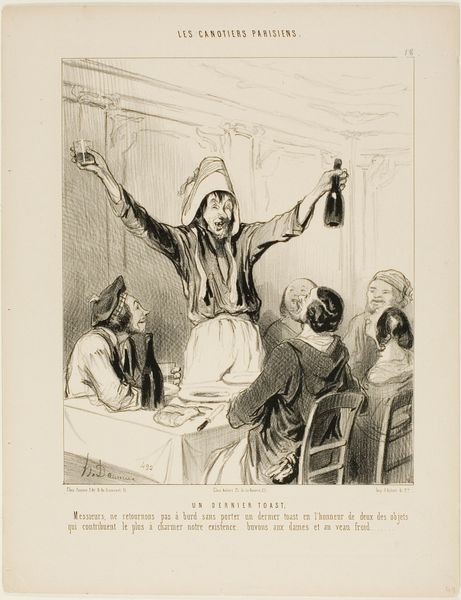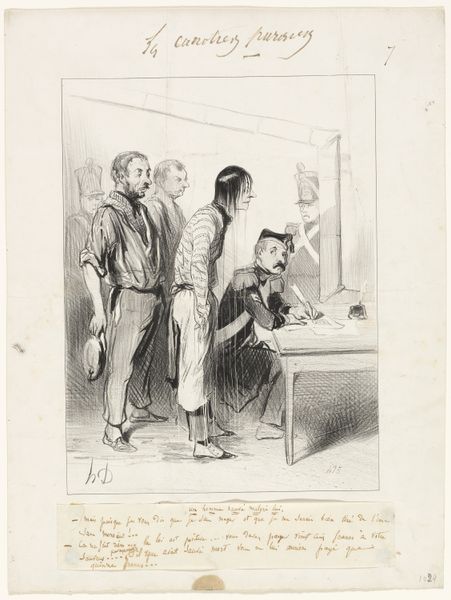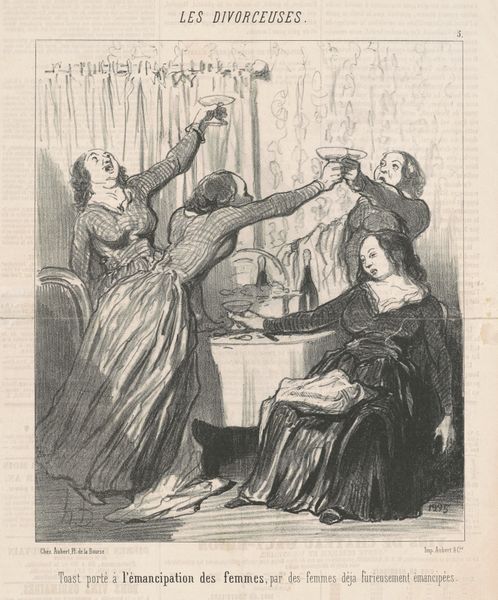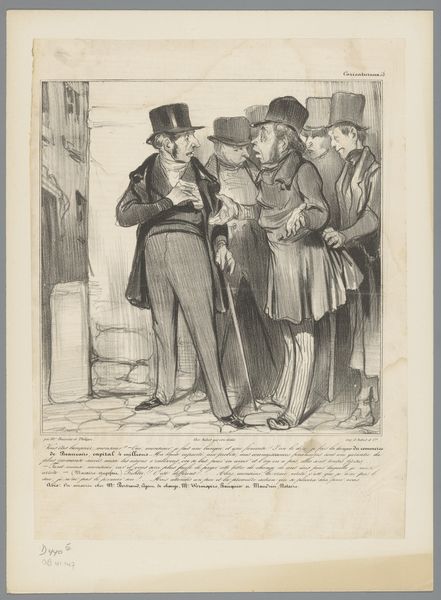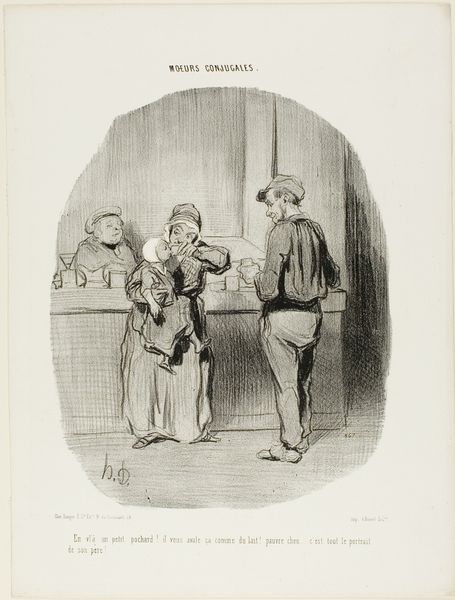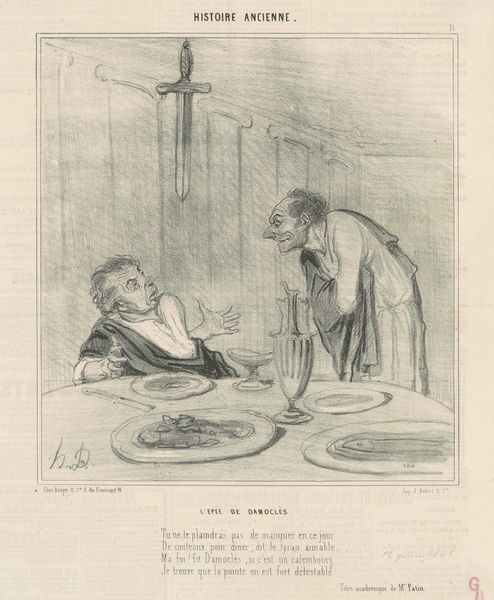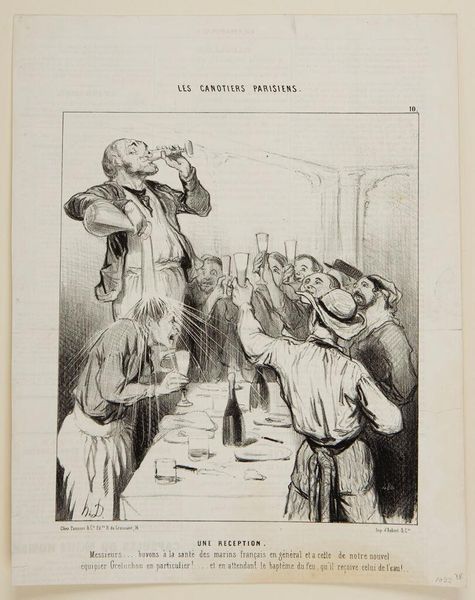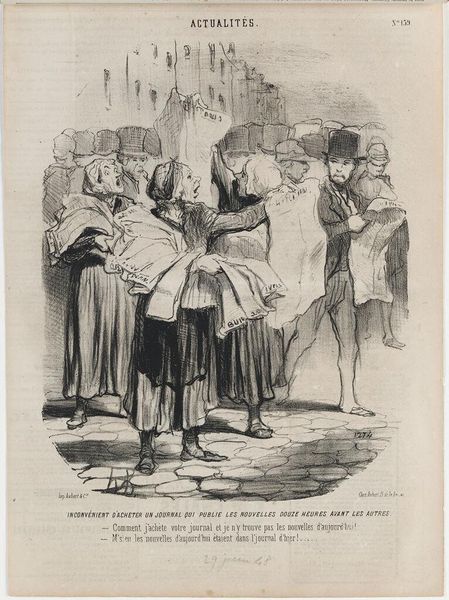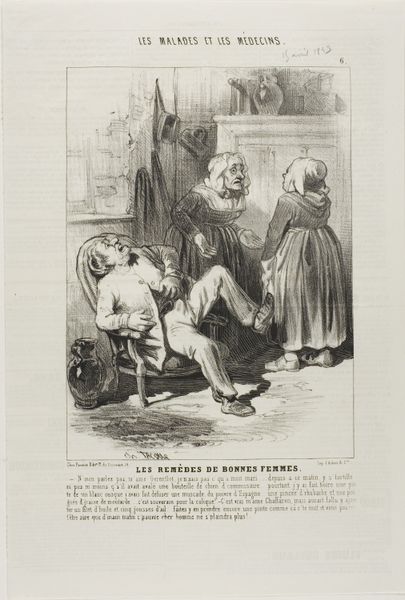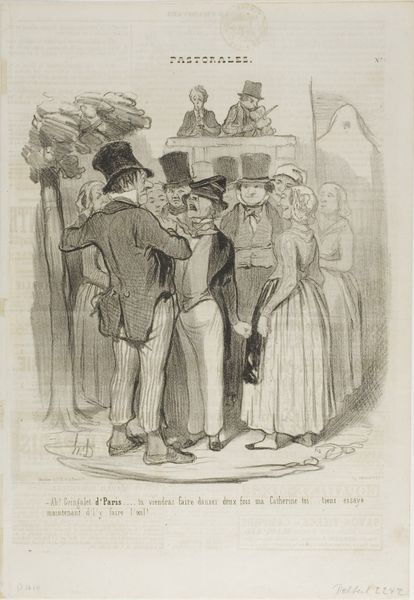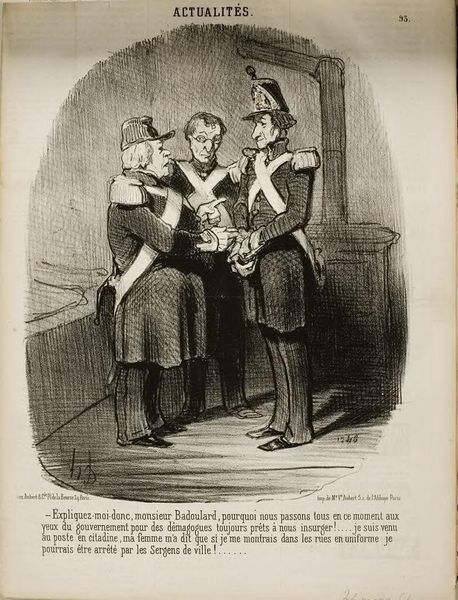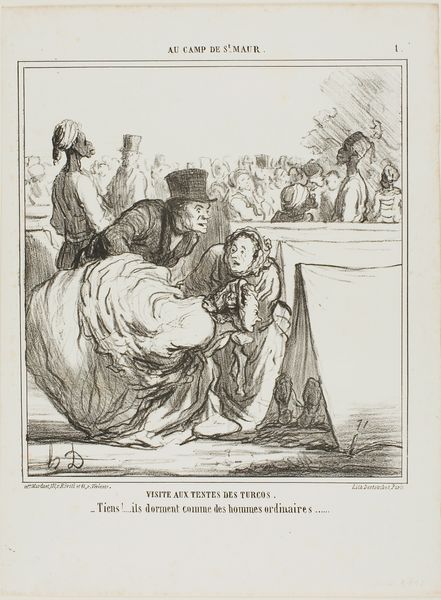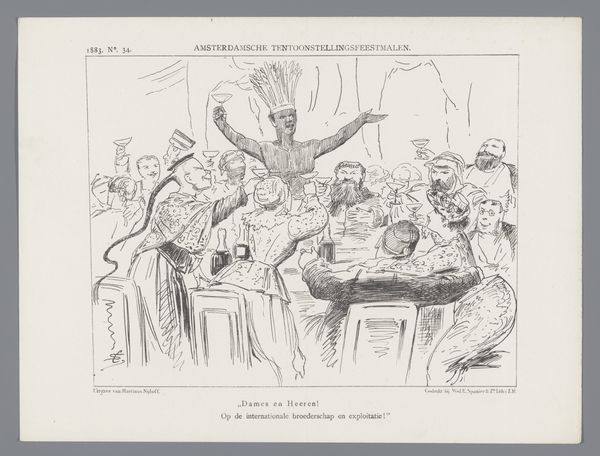
A Reception. “Gentlemen..... let's drink to the health of the French sailors in general and to the new teammate Greluchon in particular!.... and while waiting for his baptism by fire, we'll give him in the meantime one with water,” plate 10 from Les Canotiers Parisiens 1843
0:00
0:00
drawing, lithograph, print, paper
#
drawing
#
lithograph
# print
#
paper
#
romanticism
#
genre-painting
Dimensions: 230 × 198 mm (image); 342 × 265 mm (sheet)
Copyright: Public Domain
Curator: Look at this, a lithograph by Honoré Daumier titled "A Reception. 'Gentlemen… let's drink to the health of the French sailors in general and to the new teammate Greluchon in particular!… and while waiting for his baptism by fire, we'll give him in the meantime one with water,'" made in 1843. It’s part of the "Les Canotiers Parisiens" series. What strikes you first about this piece? Editor: The immediacy, the energy! The composition directs the eye upwards to the man drinking on the table, a real focal point made starker by the contrast of the shadowed background, doesn’t it? A feeling of drunken camaraderie, almost theatrical, but decidedly off-kilter. Curator: Precisely. Daumier often used his art as social commentary. These "Canotiers," or Parisian rowers, were a particular subject of interest. They represented a new, somewhat rebellious, leisure class, flouting social conventions after the July Revolution. Editor: The title suggests it's a celebration of this new 'teammate,' Greluchon. I love how Daumier uses line to convey movement – those radiating lines showing water being splashed create a fantastic sense of implied action and the sheer discomfort of poor Greluchon. Curator: That awkwardness, that very human quality, is a Daumier hallmark. But look closer at the political context. The 1840s in France were a period of social and political turmoil, rising industrialization, and growing discontent among the working class. These boisterous boaters are also a satirical jab at the bourgeoisie, caricaturing their excesses and trivial pursuits. Editor: I see what you mean. Even the textural variations, from the dark shading implying volume, to the sketchier details on their faces, highlight the nuances in his style. It’s this attention to both form and detail, balanced with his critical outlook, that captures and retains your attention. Curator: The lithographic printmaking allowed for the widespread dissemination of these images in periodicals, directly engaging with public discourse and forming opinion. Editor: It really underscores how powerful these artworks could be. From a formal standpoint, this use of dark and light adds depth, but from a socio-political angle, we see this as highlighting and emphasizing societal fractures. Curator: Ultimately, the artwork remains complex: is Daumier simply mocking or is he celebrating them in his own way, or maybe even critiquing a broader context? This blending and playing with perspectives makes his works so lasting, even today. Editor: Agreed. I walked away seeing a master of visual storytelling playing deftly with space, light, and perspective. Now, I see those design elements supporting a deeply insightful commentary.
Comments
No comments
Be the first to comment and join the conversation on the ultimate creative platform.
